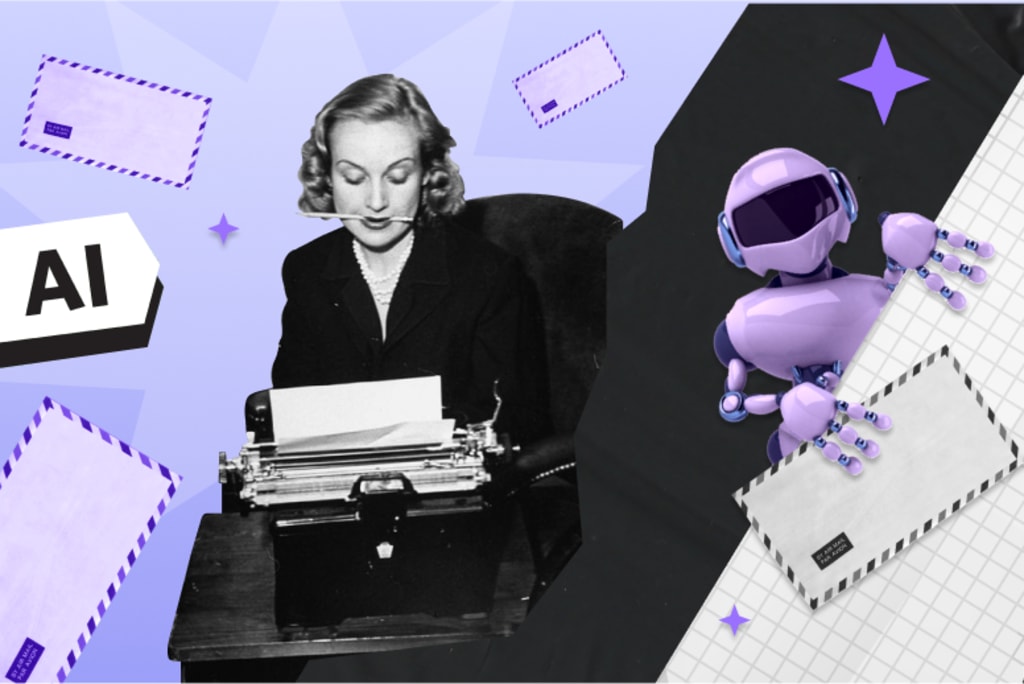
Discussions about neural networks are ongoing, with new AI-based programs and applications constantly being released. For marketing professionals, keeping up with these trends is challenging, and it's even harder to choose among the multitude of applications to find those truly worth using.
Certainly, neural networks are not a panacea. They cannot accomplish anything without human input. The key issue here is ethical considerations. Neural networks are almost incapable of generating content that could be immediately applied across any industry without concerns. There should always be symbiotic relations between human activity and technology: AI suggests ideas, and humans edit and refine them.
To train a neural network, an enormous dataset is required. The more data, the more sophisticated the AI model will be. However, access to information can be hindered by issues related to confidentiality and intellectual property rights. Ethical questions stand out distinctly. They will be explored within the scope of this article.
Human or Machine?
Today, virtually no online business operates without content generated by neural networks. This technology significantly eases the work of specialists: they can enjoy the creative process rather than deal with routine tasks. However, every time we use AI, the following questions come to mind.
1. Who owns the content or code created by a neural network?
If you use AI to write code or blog posts, who owns the copyrights? Is it you? Or the provider of the neural network? Legislation currently lacks a clear answer regarding the ownership of intellectual property results obtained through neural networks.
2. Do you want to assist your competitors?
If you create content using a neural network, the data you upload will be used to train other AI models. This pertains to situations where competitors might be interested in your company's data, such as closed-source code under NDA or a marketing strategy that surpasses theirs.
3. How to deal with the risk of legal action for using content created by AI?
There have been cases where people were sued for using content generated by neural networks. Even companies like Google have faced similar issues.
4. What if there's no longer a need for manually created content in the future?
Neural networks can generate content optimized for search engines. Will this lead to a decrease in the value of 'human' content? Or will generated and manually created content organically complement each other?
5. Isn't there a risk in giving confidential and corporate information to neural networks?
Artificial intelligence tools need data for training and operation. What data is needed? How will they be used? What are the confidentiality issues when transferring data to artificial intelligence?
6. Who is responsible for incorrect information?
AI tools and chatbots are not flawless. They make mistakes. What happens when neural networks generate inaccurate content? Who is responsible for this?
Artificial intelligence tools largely depend on the data they are trained on to create the final text. What goes into the input data will reflect in the output. Sometimes, AI can learn biases and stereotypical thinking.

7. Can AI replace humans in the workplace?
Will neural networks replace marketers when they can create 10 times more content than humans using only 10% of the resources? How will the decision-making process change for humans? What will happen to human rights?
8. How will the implementation of AI affect the cost of content?
If AI can create content indistinguishable from human-generated content, will the cost of content decrease? People might not want to pay for material if they can get it for free from AI.
The problems with AI are becoming evident
Generative neural networks are not always accurate. But the main issue arises when sensitive information about a company is uploaded to AI; the AI developer gains access to that information and can freely utilize it.
Therefore, confidential data should not be handed over to neural networks without the owner's permission. When training AI models, it's crucial to ensure that the information used for training was obtained legally and doesn't violate any laws or regulations. Most publicly available generative AI services (such as ChatGPT) do not disclose the datasets they were trained on. As a result, it's unclear who actually owns the data.

The situation is exacerbated by the inability to verify the objectivity of the results, and AI bias is a real problem. Robots 'pick up' stereotypes from training data. They can convincingly lie. Therefore, it's unwise to trust content generated by AI as the sole source of information, especially when it comes to scientific research.
Identifying issues with AI is not difficult. Content created solely by neural networks stands out significantly:
- Long, complex paragraphs with repetitive content
- Clumsy clichés, awkward structure, and syntactically long sentences
- Abundant use of adjectives
- Facts based on subjective opinion.


Ethical rules for using artificial intelligence
Using generative AI is recommended with a license from the company. This is important in terms of responsibility and ownership rights. However, it's crucial not to directly copy the content or code of a neural network. Always edit, modify, and supplement material to make it unique.
- Data protection is the most important aspect. The accuracy of information generated by neural networks is questionable, and it should not be blindly trusted, especially in the case of rapidly changing topics.
- The output of a neural network should not be copied verbatim. Generating content is good, but always remember the need to refine the output for truly fresh ideas.
- Artificial intelligence is excellent for surface-level exploration and idea testing. It should not be used to prove one's ideas.
- Most information is considered 'sensitive' content. Any information entered into a neural network may be accessible to competitors, current and potential clients.
- Do not share personal data with AI tools like ChatGPT. The same applies to customers' personal data (names, email addresses, phone numbers, and other personally identifiable information).
Using neural networks: pros and cons
You decide which ethical principles you want to adhere to and what standards to apply in your company. However, relying solely on a neural network to create content isn’t the solution.
Gather as much information as possible on the topics you're interested in. Review videos, documents, blogs, drafts, etc., and compile them to create a substantial library of information. Then, write a portion of the content yourself and let artificial intelligence refine the rest. Maintain a consistent writing style and incorporate relevant examples and keywords.
Examples of misuse of neural network tools
- Generating content for marketing emails using personal licenses.
- Inputting a company's financial data into an AI algorithm.
- Generating code using neural networks and using it without making any modifications.
Examples of effective use of AI tools
- Using corporate licenses to generate content for email campaigns; testing and meticulously editing content before publication.
- Engaging neural networks to improve algorithms without handing over the code to AI directly.
- Generating ideas for new marketing campaigns and analyzing how they could benefit the business.
Everyone knows that your content is written by a neural network
Let's set aside ethical issues related to AI, confidentiality, and cybersecurity. One of the biggest problems arising from the improper use of AI is that text generated by neural networks is relatively easy to identify.
Why is it a problem?
Let's say you use AI to automate all your "cold" emails. Outlook by Microsoft and Gmail by Google are the two largest email service providers. To protect their clients from spam, they flag emails generated by neural networks as spam. The capability to identify such messages has improved. So even if your crafted message looks impressive, it will be rendered useless if it doesn't land in the potential client's mailbox.
While it might seem like just an email, phishing attacks based on artificial intelligence are increasingly common. To safeguard their clients, major tech companies are blocking content entirely created by neural networks.
People might lose interest in your email if they suspect its content was entirely crafted by a neural network. Expanding the volume of text at the expense of quality will likely cost both you and your company.
However, using AI and machine learning algorithms isn’t a crime. Not all content needs to be generated by artificial intelligence. It’s more practical to use AI for inspiration, planning, and headline creation, but it shouldn’t entirely replace human effort.
The article was originally published here.
About the Creator
Altcraft
Interesting and useful articles about marketing, our product and online communications






Comments
There are no comments for this story
Be the first to respond and start the conversation.